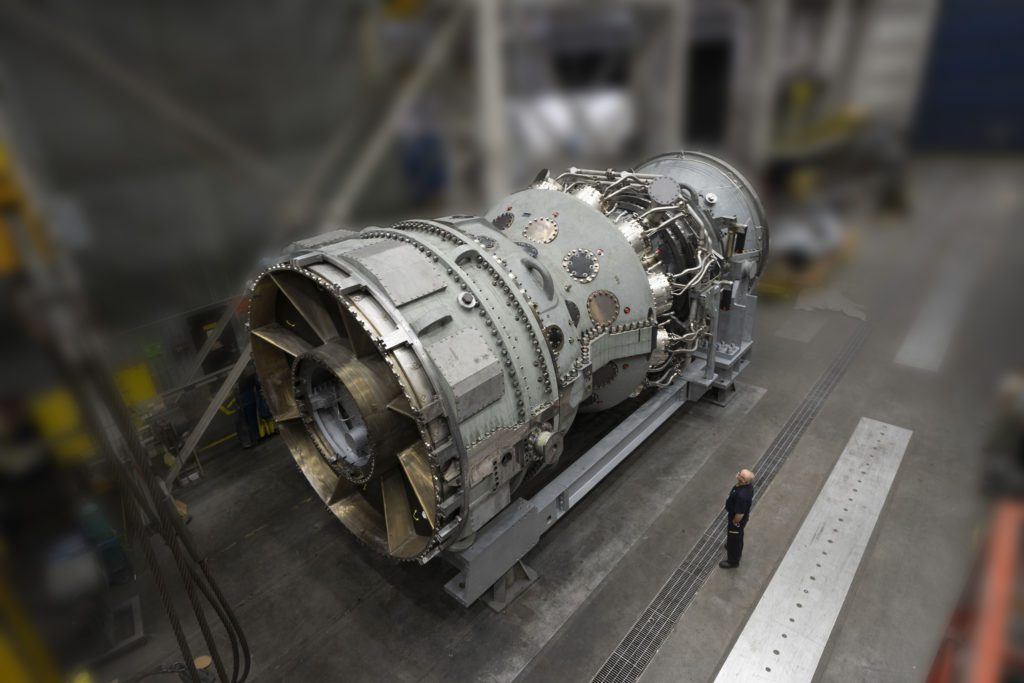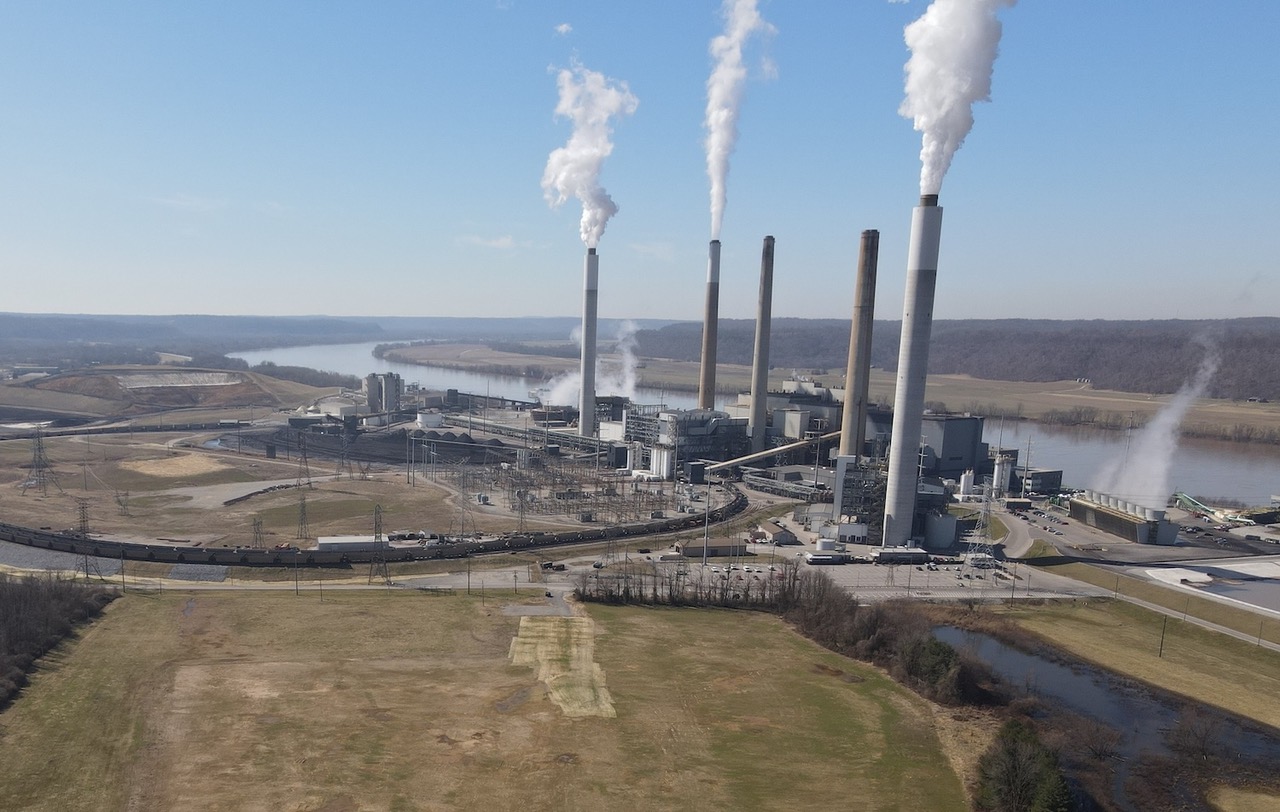Kentucky’s Mill Creek Generating Station sits on more than 500 acres along the Ohio River, about 20 miles south of Louisville. For generations, the river has been the region’s lifeblood, transporting millions of tons of coal to Mill Creek and dozens of other power plants lining its banks, from Pennsylvania to Illinois. Soon this vital artery will deliver a very different cargo to Mill Creek’s doorstep: a GE Vernova 7HA.03 gas turbine. When it comes online, which is expected in the summer of 2027, the 645-megawatt (MW) turbine will replace two coal units being permanently retired, part of a massive shift toward lower-emitting energy production that will serve as a bridge to more renewable sources of energy in coal country.
“It’s a huge deal for this to happen in Kentucky, one of the top coal states in the U.S.,” says Michael McCarrick, a power generation development manager at GE Vernova’s Gas Power business, who manages new equipment sales in the Northeast and the Midwest. But getting here, he notes, was not easy.
Kentucky is the fifth-largest coal producer in the country; coal is a major source of jobs here, and nearly 70% of the state’s electricity comes from coal. That’s down from around 90% historically, but it’s still among the highest shares in the United States. Louisville Gas and Electric Company and Kentucky Utilities Company (LG&E-KU) faced community and regulatory headwinds to gain approval to replace the two coal units at Mill Creek. The utilities’ ambitious $2 billion plan also includes 877 MW of new solar generation and the building of a 125-MW/500-megawatt-hour battery storage facility. McCarrick describes this plan as “the energy transition in a nutshell.”
LG&E and KU call their plan a comprehensive, “all of the above” approach. As they wrote in their project application to the state: “The Companies recognize that Kentucky, the United States, and indeed the world are in a time of unprecedented change concerning electric supply. Although there is room for disagreement concerning the precise timing and mechanisms by which it will come about, there is no reasonable doubt that the future of electric supply, at least in the United States, will be lower carbon.”

The GE Vernova 7HA.03 gas turbine. Top: The Mill Creek Generating Station. Images credit: GE Vernova.
Rather than just keeping the lights on as coal phases out, LG&E and KU are preparing for an energy sea change. In addition to replacing two coal units with a new power plant powered by GE Vernova 7HA.03 combined cycle equipment, they are adding renewable capacity and testing where and how to store energy for peak times. “That’s different than other utilities,” McCarrick says. “I think they are more forward-thinking in that sense.” While the utility works to develop the ability to store energy at scale, they’ll rely on GE Vernova’s advanced natural gas combined cycle technology, which uses both a gas and a steam turbine together to produce up to 50% more electricity from the same fuel. The 7HA.03 is also able to support a blend of up to 50% hydrogen and natural gas, to drop CO2 emissions even lower.
Part of a Bigger Trend
GE Vernova is taking on similar roles as transition stories like this unfold around the world. Around the same time the 7HA.03 comes online in Kentucky, the company will be providing a 7HA.02 in Chungcheongnam, South Korea. Following roughly two decades of coal growth, the South Korean government plans to reduce coal capacity from 27% in 2023 to 11% by 2036. To support this, the country will have to ramp up generation from natural gas. That’s why KOWEPO, a subsidiary of Korea Electric Power Corporation (KEPCO), intends to replace its aging coal-fired plant in Chungcheongnam with new natural gas power generation, expected to reach an output of 500 MW. The utility also could also opt to introduce hydrogen into its fuel mix once a hydrogen-manufacturing industry of an appropriate size and scale can be developed.
“This serves as a great opportunity for GE Vernova to support Korea’s power development plan with our HA technology,” says Jason Cooper, global heavy duty gas turbines leader.
Abroad and at home, Cooper believes we’re approaching a “peak coal moment — if we haven’t hit it yet.” The U.S. has been steadily moving away from coal as its costs — both economic and environmental — rise. But coal retirement has slowed of late as energy demands change and grow. For example, tech companies whose data centers are hungrier than ever because of the growth of AI “want to be all renewable power,” he says. “But they also want reliability,” and utilities are grappling with how to supply their customers when the sun isn’t shining and winds are still. “You need to back it up with gas.”
Then you’ve got more electric vehicles, which need electricity, as do the factories producing their batteries. Case in point: The BlueOval SK battery plant, which will begin making batteries for electric Ford and Lincoln vehicles next year in Glendale, Kentucky — a stone’s throw from Mill Creek — is predicted to boost local energy demand.
That’s where GE Vernova’s combined cycle 7HA.03 power plant comes in. The company will deliver its massive unit along a familiar route. It will be assembled at GE Vernova’s Greenville Service Center in South Carolina, then sent by rail to Charleston, South Carolina. From there it will travel to the mouth of the Mississippi River and then up the Mississippi on a barge to the Ohio River, before being offloaded right near the site at Mill Creek.
Once it fires up, the benefits are expected to be almost immediate. Coal emits twice as much carbon dioxide as natural gas does. And the coal units slated for sunset aren’t equipped to scrub nitrogen oxide emissions to bring them in line with tightening federal regulations. “By shutting down coal and adding gas,” McCarrick says, “LG&E-KU is basically cleaning the air in Louisville.”
